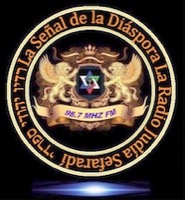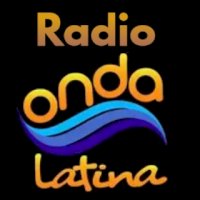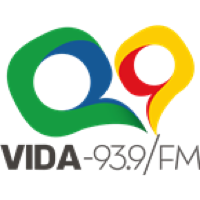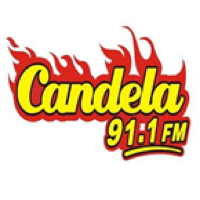
Estación que difunde programas variados con los mejores contenidos del dial, brindando música de los géneros de pop latino y top 40. además de información de interés general tanto a través de la frecuencia modulada como en su espacio virtual.
XHITZ-FM (Z90.3) is a CHR/Top 40 radio station in San Diego-Tijuana, broadcasting at 90.3 MHz.The station is owned by Comunicación XERSA, S.A. de C.V., a Mexican company. Local Media of San Diego leases the right to use the frequency and programs the station from San Diego, along with two other Mexican FM stations broadcasting in English, Alternative Rock 91.1 XETRA-FM and Rhythmic Oldies 92.5 XHRM-FM.XHITZ-FM's 100,000 watt transmitter and antenna are on Mount San Antonio in Tijuana. The studios and offices are on Cornerstone Court East in San Diego.In September 1970, the station signed on as XHIS-FM, more than three years before receiving its concession in November 1973. It was owned by Víctor Díaz, the founder of Califórmula Broadcasting, which would come to own and operate numerous stations in the San Diego-Tijuana radio market. However, it signed on with a brokered radio format from the United States. Time Sales, Inc., owned by radio automation pioneer Paul Schafer, and presented a jockless progressive rock format known as HIS Radio. Time Sales added a second Mexican station when 100.1 XHERS-FM (now 104.5 XHLTN-FM), a soft rock station known as HERS Radio, signed on in December, and a third, XHQS-FM 95.7 OURS, was also planned. Aside from the music, HIS Radio featured parodies of commercials and a satirical radio novel, the O.B. Ranger. The operation was run by Larry Shushan, a former owner of KPRI FM radio and one of the builders of KAAR, San Diego's first UHF television station.XHIS and XHERS broadcast from a new facility in Tijuana with custom-built 100,000 watt transmitters, throwing maximum power at San Diego. These were the first border blasters on FM. Programming originated from Time Sales's studios and sales offices at the Royal Inn at the Wharf and was transported by cassette to the transmitter, as the Brinkley Act prevented a live hookup from being used. Within six months, Time Sales had two of the top three stations in San Diego.By 1973, however, the tides had turned for Time Sales. San Diego broadcasters complained of disloyal competition across the border that didn't have to play by the Federal Communications Commission's rules for radio stations and decried the promotion of XHIS and XHERS as San Diego stations not using the X in their call signs. The FCC opened an investigation into Time Sales, Schafer and Shushan, resulting in mounting legal fees. Ultimately, Time Sales folded, and Díaz began operating the station under the brand Estéreo 90, La Buena Onda. By 1975, XHIS was broadcasting soul music and R&B. Ironically, it was more popular with teens and women than with men.A 1981 row between Califórmula and politically motivated broadcast workers temporarily forced Díaz out of the broadcasting business. In April, a report had aired on one of the Califórmula stations criticizing Baja California Governor Roberto de la Madrid. Just two weeks after returning to an R&B format, in September, workers affiliated to the Union of Radio and Television Industry Workers (STIRT) went on strike, and the only way to resolve the strike was to sell XHIS and XHERS to Francisco Aguirre, founder of Mexico City broadcaster Grupo Radio Centro. The Tijuana acquisition marked GRC's first ever expansion outside the capital city.Two years later, Díaz bought back the cluster of XHIS and XHERS, instituting new call signs and formats on both. That year, XHIS became XHITZ-FM and changed to an album-oriented rock format under contract to San Diego Radio Company. However, in 1984, the station stumbled in an ownership dispute. A bitter battle between San Diego Radio Company and Califórmula led to the abrupt end of the album rock format as the latter took control of the station.[4] Díaz cited continued low ratings, but the straw that broke the camel's back was a humorous news report read on the station that stated a German anthropologist had discovered a tribe of mole people living in the sewers of Mexico City. When the report was read in late June, it caught the attention of Mexican authorities, who were outraged over the secondhand account they had heard, which implied that Mexicans were so poor they lived in sewers.In 1986, Díaz sold the American marketing rights for XHITZ again, this time to Broadcasting, Marketing and Management, Ltd. BMM ceased operation of the station on June 30, 1988 as it assigned the rights to another company, Consolidated Radio Sales, which was also bankrupt. The result was that Díaz and the head of Consolidated Radio Sales, Jack McCoy, clashed. In mid-July, McCoy fired all the employees in the US and had all the locks changed, with several employees instead showing up to work in Tijuana. Later that day, however, a bankruptcy judge ruled that Díaz owned the US operation of the stations.In 1989, XHITZ flipped from adult contemporary to a rock-oriented hits format known as Pirate Radio, based on the success of KQLZ in Los Angeles. On April 5, 1990, however, XHITZ switched formats to Rhythmic Top 40 under Program Director Rick Thomas, with a Dance-leaning direction. Z90 competed against Q106, which was the powerhouse of Top 40 in the market. With Z90's debut, however, it took only a few books for XHITZ to beat Q106, and thanks to its success, it also forced the market's only Urban Contemporary outlet, future sister station XHRM, out of that format by 1993. As Z90 remained on top, Q106 shifted towards a more Mainstream Top 40 format, and it wasn't until September 1996 that XHITZ would have another direct competitor against KHTS, which had a Dance lean, much like XHITZ.However by August 1998, XHITZ would move away from its Dance approach to begin focusing more on R&B/Hip-Hop product. The station also rebranded as Jammin' Z90 before reverting to Z90.3. In 2002, Califórmula, which wound down most of its operations over the early 2000s as Díaz retired and then died. The US operating rights were sold to Clear Channel Communications (forerunner of today's iHeartMedia) and the concession was transferred to a new Mexican concern, Comunicación XERSA. XHITZ remained a hip-hop leader until 2004, when 98.9 XHMORE-FM flipped to a hip hop-leaning Rhythmic Top 40. These two stations would battle until late 2009, when XHMORE changed formats. Shortly after this, XHITZ shifted back to its Dance-leaning and more Mainstream sound. Despite being the market's only Rhythmic Top 40, XHITZ continued to share much of the same music as KHTS and KEGY, all of whom are Rhythmic-leaning Top 40/CHRs, along with Adult Top 40 KMYI. On April 2, 2012, XHITZ rebranded itself from Z90.3 to Jammin' Z90. In mid-2014, XHITZ rebranded back to Z90. Today, the station airs a CHR format, resulting in both Nielsen BDS and Mediabase moving XHITZ from the Rhythmic to Mainstream reporting panels in February 2015.Clear Channel controlled XHITZ and two other radio stations licensed to Mexico but programmed in English and aimed at the San Diego market, as well as owning five FM stations in San Diego as well. A 2003 Federal Communications Commission ruling forced Clear Channel to divest the operating rights to its Mexican stations in order to remain under FCC ownership caps. On July 25, 2005, Clear Channel transferred the programming and local marketing arrangements of XHITZ, along with XETRA-FM and XHRM-FM, to Finest City Broadcasting, a new company under the direction of former Clear Channel/San Diego VP/Market Manager Mike Glickenhaus. Finest City took over operations on December 1, 2005.In 2009, these programming and marketing rights were sold to Broadcast Corporation of the Americas after Finest City defaulted on assets that resulted in its bankruptcy. In 2010, BCA would spin off XHITZ, XETRA and XHRM to Local Media of America after a change in management.On October 6, 2015, Midwest Television (owners of 760 KFMB and 100.7 KFMB-FM) announced that it had entered into a joint operating agreement with Local Media San Diego LLC, forming an entity known as SDLocal to manage their collective cluster of stations. The intent of this agreement was to [preserve the] local ownership and operation of San Diego's top-rated radio stations. The agreement ended at the end of 2016.
- pop hip-hop top40
- 6160 Conerstone Court East Suite 150 San Diego, CA 92121
- Tijuana
- México | Mēxihco
- (619) 570- 1903, (619) 88
- Домашняя страница Фейсбук Твиттер
- Обновить радио
- Embed Code
















